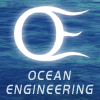
|
Jessica Noe Mechanical Engineer III jnoe@apl.washington.edu Phone 206-221-8015 |
Department Affiliation
 |
Ocean Engineering |
Education
Master of Science Mechanical Engineer, University of Washington, 2020
B.S Mechanical Engineering, University of Washington, 2017
|
Publications |
2000-present and while at APL-UW |
APL-UW Field-Scale Axial Flow Turbine: Design and Specifications Bassett, C., J. Burnett, K. Van Ness, H. Wood, J. Dosher, B. Cunningham, J. Noe, and T. Tran, "APL-UW Field-Scale Axial Flow Turbine: Design and Specifications," Technical Report, APL-UW TR 2402, Applied Physics Laboratory, University of Washington, Seattle, September 2024, 27 pp. |
More Info |
29 Aug 2024 |
|||||||
|
Axial flow turbines designed to generate power from underwater currents (tidal and riverine) are similar to the commonly observed wind turbines. With support from U.S. Naval Sea Systems Command, engineers at the Applied Physical Laboratory of the University of Washington (APL-UW) have designed and fabricated a one-meter diameter axial flow turbine for use in APL-UW’s marine energy research program. The system, referred to as the AFT (axial flow turbine), is designed for deployment from R/V Russell Davis Light, where the vessel, under propulsion, is used to simulate naturally occurring currents for power generation. This report summarizes the AFT’s mechanical and electrical design and is intended as a reference to support research efforts performed using the system. Encoders and six-axis load cells installed on the driveshaft and at the root of one of the rotor’s three blades, allow for characterization of the forces and torques generated during operation. The system was designed for reliability and to acquire scientific-quality data to advance studies of axial flow turbines. Thus, system components selected in the design process are not intended to maximize system efficiency and power extraction. |
|||||||||
Adaptable and distributed sensing in coastal waters: Design and performance of the μFloat system Harrison, T.W., C. Crisp, J. Noe, J.B. Joslin, C. Riel, M. Dunbabin, J. Neasham, T.R. Mundon, and B. Polagye, "Adaptable and distributed sensing in coastal waters: Design and performance of the μFloat system," Field Rob., 3, 516-543, doi:10.55417/fr.2023016, 2023. |
More Info |
1 Mar 2023 |
|||||||
|
Buoyancy-controlled underwater floats have produced a wealth of in situ observational data from the open ocean. When deployed in large numbers, or "distributed arrays," floats offer a unique capacity to concurrently map 3D fields of critical environmental variables, such as currents, temperatures, and dissolved oxygen. This sensing paradigm is equally relevant in coastal waters, yet it remains underutilized due to economic and technical limitations of existing platforms. To address this gap, we developed an array of 25 μFloats that can actuate vertically in the water column by controlling their buoyancy, but are otherwise Lagrangian. Underwater positioning is achieved by acoustic localization using low-bandwidth communication with GPS-equipped surface buoys. The µFloat features a high-volume buoyancy engine that provides a 9% density change, enabling automatic ballasting and vertical control from fresh to salt water (~3% density change) with reserve capacity for external sensors. |
|||||||||
Evaluation of two depth-holding algorithms for a buoyancy-controlled coastal float Harrison, T., A. Ziemann, J. Noe, B. Shappell, and K. Morgansen, "Evaluation of two depth-holding algorithms for a buoyancy-controlled coastal float," Proc., IEEE OCEANS, 17-20 October, Hampton Roads, VA, doi:10.1109/OCEANS47191.2022.9977033 (IEEE, 2022). |
More Info |
19 Dec 2022 |
|||||||
|
For coastal floats, buoyancy control algorithms must provide high-accuracy depth control in shallow waters with fast currents and strong density gradients. Here, we compare two depth-holding algorithms through tank and field testing with the μFloat, a coastal float designed for distributed array surveys of tidal currents and other water properties. A linear-quadratic-regulator (LQR) controller was designed and implemented on the μFloat. The LQR controller was evaluated against a two-stage proportional-differential (2S-PD) previously used on the μFloat. Relative to the original 2S-PD controller, the LQR controller reduced overshoot, motor actuation, and power consumption. Implementing a wide (±0.5 m) dead-band on the LQR controller proved particularly successful, reducing motor actuation by 80% and reducing power consumption by 40–60%. The original 2S-PD controlled remained superior in minimizing time to target depth and depth-holding accuracy. Future improvements on the LQR controller are discussed. |
|||||||||




